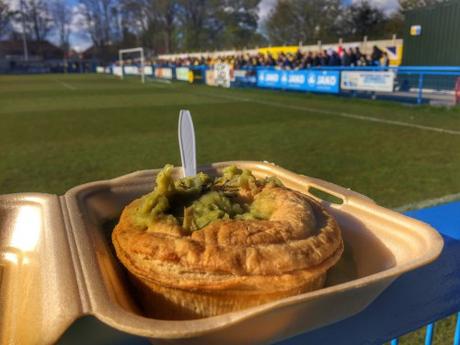Question – Which English league has so far seen the most managerial sackings?
For those fans who live in the warm, safe environment of the Premier or Football League I don’t they will know the answer to hand. For the record there have been eight managers leave their posts since the start of the season, although you could also bundle in the likes of Allardyce and Bruce who left their positions in the pre-season period. The Championship actually leads the way with three manager’s fired so far this season – Nigel Pearson at Derby County, Paul Trollope at Cardiff City and Roberto Di Matteo at Aston Villa, with League One and Two only having two casualties apiece, whilst poor old Francesco Guidolin being the sole Premier League scalp so far.
However, take one step down from Football League Two and you will find possibly the most cut-throat managerial environment in England. The National League Premier, aka The Conference Premier has so far seen seven of the twenty-four clubs lose their managers since the opening day of the season. With almost a third of the season so far played, that number is ridiculous, but why is it over double that of any of the leagues above them?

– Braintree Town – sacked Jamie Day in September. After finishing in the Play-offs last season expectations would have been high but the loss of former manager Danny Cowley to Lincoln City was a big blow – borne out by the fact that Lincoln City are currently enjoying one of their best seasons in years, sitting in third place at the time of writing. Day was fired with the club in 22nd place, one place lower that they are today.
– Eastleigh – sacked Chris Todd in August. The season was only four games old when Eastleigh fired Todd after a shocking start had seen them bottom at the time. Since appointing Ronnie Moore they have climbed up to 8th in the league, winning six and drawing three of their last ten games.
– Guiseley – sacked Mark Bower in August. After surviving on the last day of the season with a win over Torquay United, it was somewhat of a surprise that the board at Guiseley decided to act so quickly, despite them being bottom of the league. They are one of the smallest clubs in the league and keeping their head above water was always going to be a struggle with teams on significantly bigger budget. Adam Lockwood was appointed as his replacement but they are still in the bottom four.
– Southport – sacked Andy Bishop in early September. A similar situation to Guiseley where they have been just keeping their head above water for a while. The former Football League club dispensed with Bishop’s services when the club were in 23rd spot. He was replaced by Steve Burr and things are still not going to plan with the Sandgrounders currently propping up the rest of the league.
– Tranmere Rovers – sacked Gary Brabin in September, then replaced Interim manager Paul Carden in October. It doesn’t seem that long ago since Tranmere Rovers were ripping up the Championship (or whatever it was called back then) and playing in a cup final at Wembley every year. It must be hard being a Rovers fan today having those memories so vivid. When they fell out of the league in 2015 they hoped to “do a Bristol Rovers” and bounce straight back up. Under Brabin they finished last season in sixth place, missing out on the Play-offs by 2 points. With the team in 5th place it seemed the decision to sack Brabin was harsh to say the least to an outsider. Carden’s brief reign saw a win, a draw and a defeat before former Shrewsbury Town manager Mickey Mellon was appointed.
– Wrexham – sacked Gary Mills in October with the club in 15th place after defeat at Tranmere Rovers had left them in 15th place. A subsequent home defeat in the FA Cup to Evostik First Division South Stamford, and a potential lucrative tie at Hartlepool United wouldn’t have particularly pleased the fans either.
– York City – Jackie McNamara “moved” upstairs in October. There doesn’t appear to be much fun had supporting York City at the moment. Earlier this week they crashed out of the FA Cup at Curzon Ashton, missing out on a tie against the lowest ranked side, Westfields, in the First Round Proper, whilst Chairman Jason McGill had to explain comments he made on national radio about the fans. Whole situation with McNamara was bizarre to say the least. He was given one game to essentially save his job, away at Braintree, which he drew and then appeared to have been sacked, only to them be appointed Chief Executive which begs the question why did they go public with the ultimatum in the first place. Gary Mills, fresh from leaving Wrexham, was appointed this week as the new manager with York in 19th place.
So why has the National League Premier so far produced so much managerial upheaval? Could it be that the Football League is due to decide next year on whether to completely revamp the structure of leagues, going from 3 divisions of 24 teams to 4 of 20, which would mean an additional 8 teams would join the professional game. There had been some concern that the proposal may have been a back-door to try to sneak in Celtic and Rangers or some of the Premier League Development Squads, such as had happened in the failing and flailing Football League Trophy. The “Whole Game Solution” was discussed at a meeting in September where it was agreed by a majority vote that it would NOT include the two previous options of the Old Firm and Premier League DS teams. At that point the Non-League sides obviously started to rub their hands together, especially when a suggested was tabled for a 14 team expansion, making a Championship to twenty sides and then 22 in Leagues One, Two and Three. If the Football League had any sense they would have already started down this route by allowing the National League sides to play in the laughable Football League Trophy rather than the Premier League DS sides but that’s another story for another day.
Consequently, clubs in the National League are eager to finish as high as possible to stand a chance to finish above whatever cut-off point is put in place. Prize money, sponsorship money, TV revenues and so on are significantly higher in the Football League than the Non-Leagues and so clubs appear to be more prepared to make a change earlier in the season when things aren’t going their way (bar perhaps Tranmere who dispensed of Brabin when they were in 5th place).
With the proposals not now due to be discussed until June next year, the chance of any changes happening for the start of the 2017/18 season are very slim indeed. However, that doesn’t appear to have stopped some teams where ambition may be significantly higher than reality in making managerial changes. What some of the “traditional” Football League clubs may be missing is that some of the clubs now challenging in the National League are doing so from a stronger position both on and off the pitch. Current leaders Forest Green Rovers have a multi-millionnaire owner who has invested in the infrastructure and squad over a number of years and it is only a matter of time before they reach the Football League either on their own merits or through the inevitable reorganisation. Eastleigh and a wealthy backer who wants to deliver Football League status to the club, Maidstone United, Sutton United and Boreham Wood all have business models that have enabled them to build excellent facilities and continue to improve on the pitch.
Currently six points separates six former Football League sides in places 2 to 7 in the table. Undoubtedly there will be more managerial merry-go-rounds before the year is out as boards of directors all across the league can almost touch the opportunity to play in the Football League (again).

